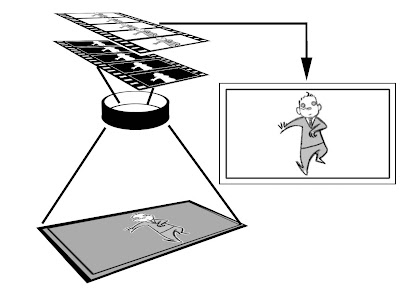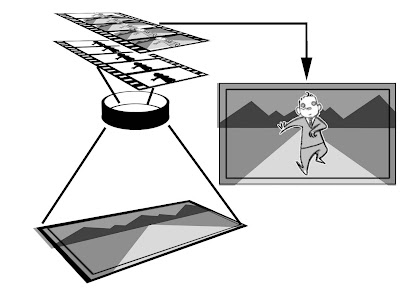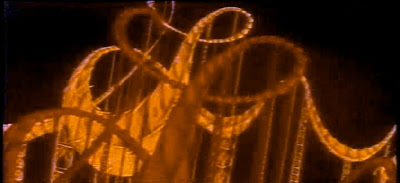No way of telling now, without talking to Mr. Leatherbarrow, but a nice opportunity to explain the system to you who are probably all used to the limitless possibility of digital compositing.
The problem with double exposures in a rostrum camera is, that for every run of animation, you need a run of mattes to cut a piece of the background out, that you want to expose the animation into.
As the mattes are produced from the same artwork as the cels, it is impossible to perform any zoom into or out of the background without also performing that zoom on the character and it's mattes.
Let's say you want the camera to travel backwards with the character, walking towards camera and the Background receding, you would have to animate the character getting bigger throughout the scene.
On slow moves, xeroxing the artwork up incrementally ultimately stumbles across the problem that photocopiers can go no less than 1% at a time, too coarse for subtle size increases.
So some clever person invented the bipac.
And here is how it works:
The cels, back painted for opacity, are shot on a light box at the same size, that the animation is supposed to appear in the shot.
The film stock used is high contrast black and white stock, so that when the stuff comes back from the lab, we have a black on white animation positive and a white on black animation negative.

Now comes the clever bit.
Let's say we want the character to remain at a constant size in the shot, while the background recedes into the distance.
A fresh piece of film is put into the camera, with the previously filmed animation negative sandwiched below it, cutting out part of the light that comes through the lens.
The cels are now placed onto a coloured card that resembles the characters outline colour and synched up with the sandwiched film inside the camera.
The animation is shot frame by frame.

The result is exposed animation on film, surrounded by unexposed film emulsion.
The animation negative is now removed from the camera and replaced by the previously shot animation positive.
That positive now covers neatly the previously shot character cel animation, but leaves exposed the previously unexposed surrounding area.
As all the matting takes place inside the camera, we can now proceed to zoom into or out of the background at will, double exposing the receeding Background behind the static character.

This technique was used to double up the roller coaster move inside the war machine at a reduced size in the background while using the original run of the animation as it's own matte.

Clever hey?

2 comments:
I always admired how you understand every difficult technical process and how incredibly stupid I feel when I don't get it.
It would be nice to get John's input on some of the work he did. Have you seen him lately?
Post a Comment